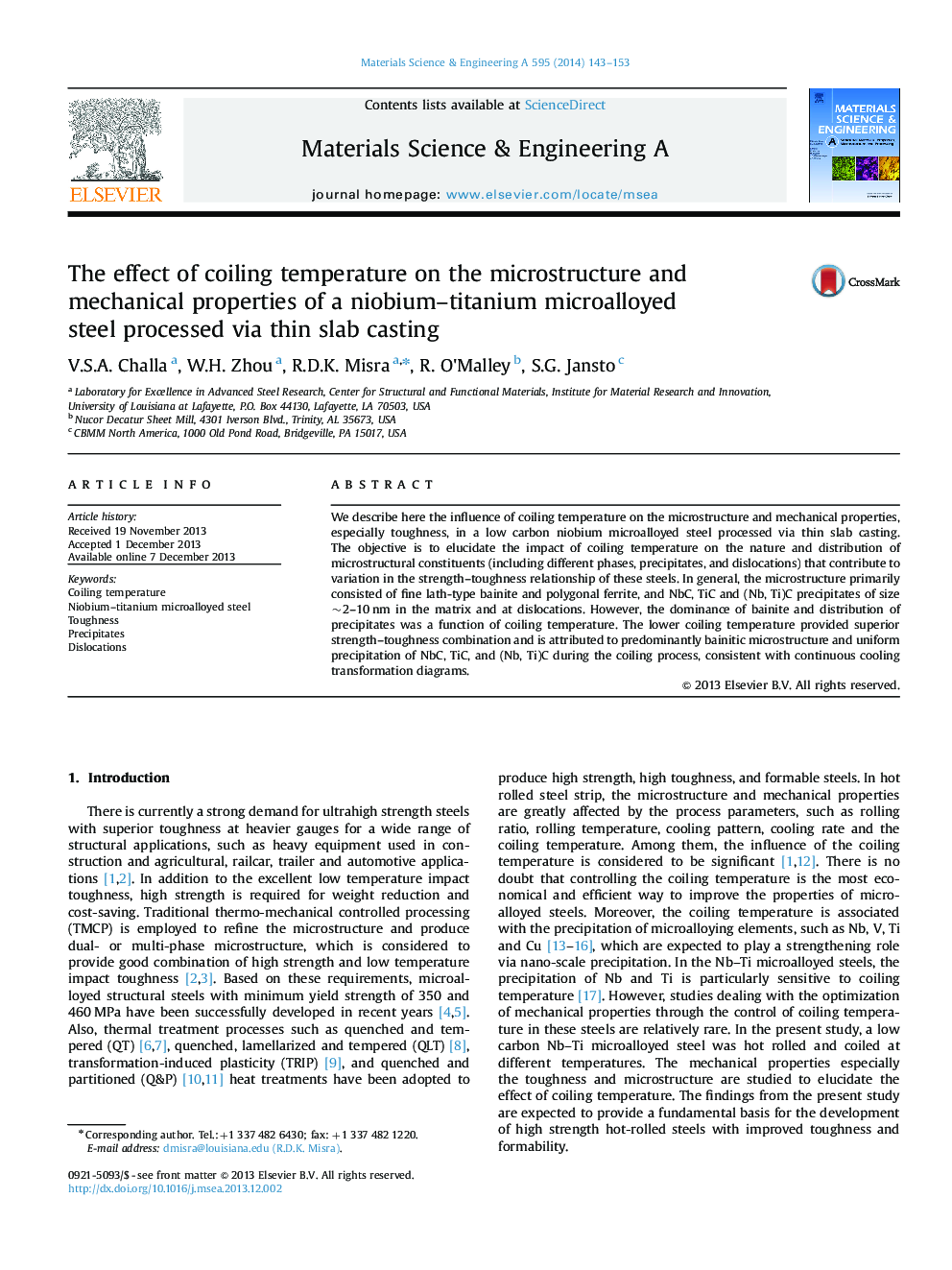| Article ID | Journal | Published Year | Pages | File Type |
|---|---|---|---|---|
| 1575506 | Materials Science and Engineering: A | 2014 | 11 Pages |
Abstract
We describe here the influence of coiling temperature on the microstructure and mechanical properties, especially toughness, in a low carbon niobium microalloyed steel processed via thin slab casting. The objective is to elucidate the impact of coiling temperature on the nature and distribution of microstructural constituents (including different phases, precipitates, and dislocations) that contribute to variation in the strength-toughness relationship of these steels. In general, the microstructure primarily consisted of fine lath-type bainite and polygonal ferrite, and NbC, TiC and (Nb, Ti)C precipitates of size ~2-10Â nm in the matrix and at dislocations. However, the dominance of bainite and distribution of precipitates was a function of coiling temperature. The lower coiling temperature provided superior strength-toughness combination and is attributed to predominantly bainitic microstructure and uniform precipitation of NbC, TiC, and (Nb, Ti)C during the coiling process, consistent with continuous cooling transformation diagrams.
Related Topics
Physical Sciences and Engineering
Materials Science
Materials Science (General)
Authors
V.S.A. Challa, W.H. Zhou, R.D.K. Misra, R. O'Malley, S.G. Jansto,
